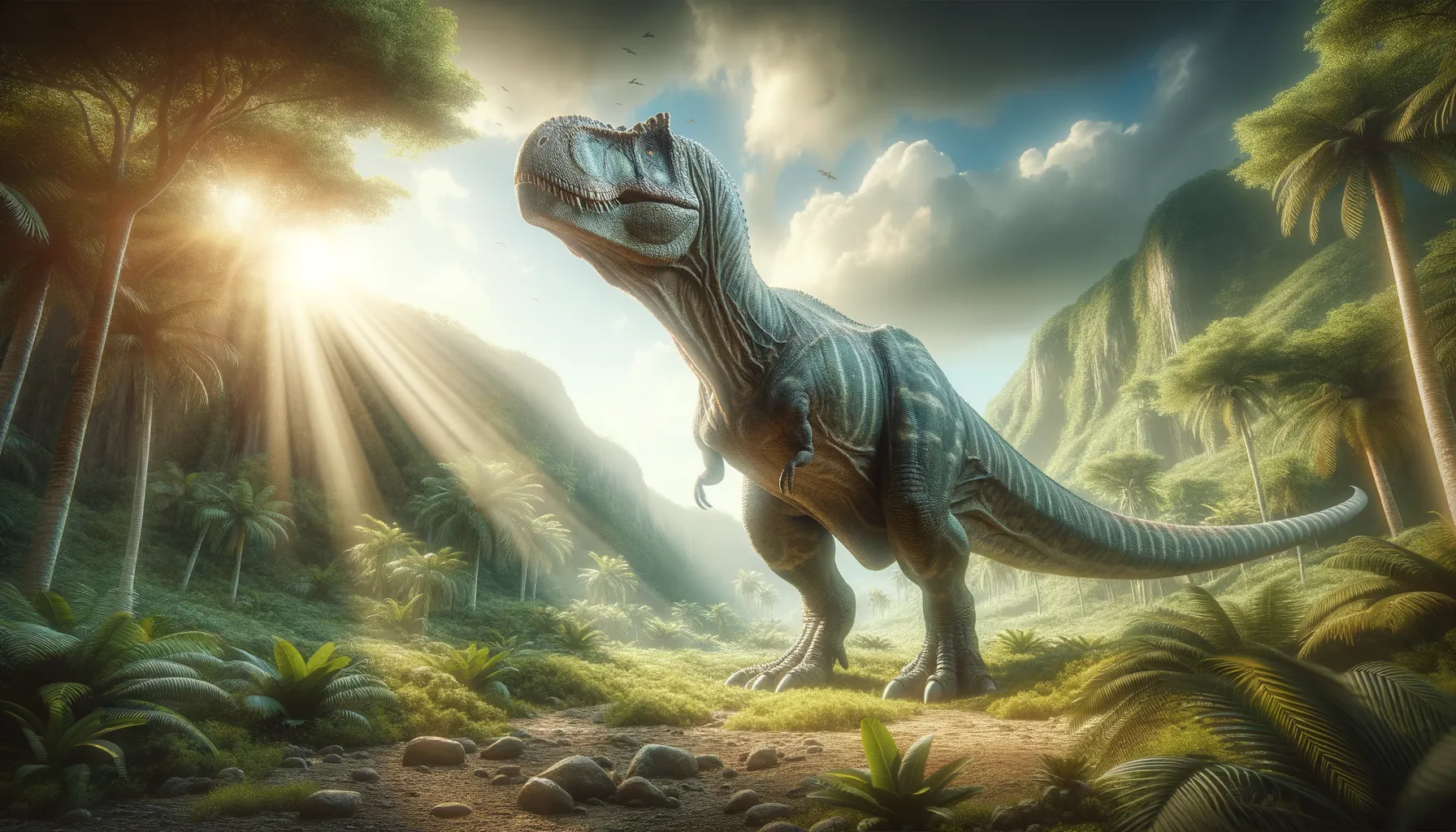
Galtonia
A glimpse into Jurassic giants
Period
Jurassic
Length
Could reach up to 10 meters in length.
Height
Possibly around 3 to 4 meters tall.
Weight
Estimated to be several tons.
Galtonia is known from limited fossil evidence, which makes its full profile less certain. However, it has been classified within a group of dinosaurs that lived in the Jurassic period. It was likely a large dinosaur, with a significant weight and height, showcasing powerful physical attributes. Its discovery in the modern era has provided a glimpse into the diverse types of life that existed during this ancient time.
Diet
Galtonia was likely herbivorous, feeding on a variety of plants and leaves available in its environment. Its diet would have required a large intake to sustain its size, which would influence its behavior and interactions with the environment.
Hunting
Being a herbivore, Galtonia would not have engaged in hunting behavior. Instead, it focused on browsing plentiful plant life, using its size and reach to access different plant types.
Environmental challenges
Galtonia faced climate changes that influenced its habitat, from fluctuations in temperature to shifts in plant availability. Predator threats were also a constant challenge, requiring strategies to avoid predation. Finding sufficient food and water would have been crucial to its survival, as competition with other herbivores would dictate food sources.
Speed
Perhaps moderately fast for its size.
Lifespan
Possibly around 20 to 30 years.
First discovery
First discovered in the late 20th century.
Fun Facts
- Galtonia is named after the British paleontologist Peter Galton, who contributed significantly to our understanding of dinosaur classification.
- This dinosaur lived during the Late Jurassic period, around 160 million years ago.
- Galtonia was a herbivore, munching on the plentiful plants that thrived in its ecosystem.
- Although not much is known about its exact size, evidence suggests Galtonia was a relatively small dinosaur compared to its massive contemporaries.
- Fossil evidence of Galtonia has mainly been found in parts of Europe, giving insights into the prehistoric landscapes of that region.
- Galtonia's unique skeletal features have helped scientists understand more about the evolutionary paths of ornithischian dinosaurs.
- The discovery and study of Galtonia contribute to the broader knowledge of dinosaur diversity during the Jurassic period.
Growth and Development
Galtonia likely experienced a growth spurt in its early years, reaching maturity over several years. Its development would be optimized by plant-rich environments to sustain its energy needs. The maturity involved developing social behaviors essential for its survival and reproduction.
Habitat
This dinosaur lived in lush, vegetated areas typical of its time, with forests and open plains lending ample food supplies. Water bodies nearby would provide hydration, an essential setting for sustaining large herbivores. The habitat supported diverse species, contributing to a competitive but resource-rich environment.
Interaction with other species
Interactions were likely limited to competition with other herbivores over food and vigilant behavior to avoid predators. Symbiotic relationships could have existed with smaller species benefitting from its feeding habits. Galtonia also contributed to the ecosystem as a significant component of the food chain.
Natural lifespan
It may have lived naturally up to 30 years.
Reproduction
Galtonia's reproduction was oviparous, laying eggs in nests constructed in safe locations. Parental care could lead to ensuring the eggs' safety, a significant factor for successful offspring. Clutch sizes would vary, and success depended on environmental factors and predation risks.
Social behaviour
It may have exhibited some degree of social behavior, with possible herding tendencies aiding protection from predators. Group behaviors could have influenced foraging efficiency and social structures were essential for reproduction and territory establishment.
Fossil locations
Fossils attributed to Galtonia have been found in regions of the UK, shedding light on its geographical range during the Jurassic. These locations indicate the type of environment present at the time, consisting of rich sediment layers. Further fossils may help clarify its distribution and ecological roles.
